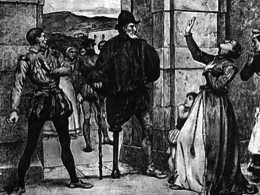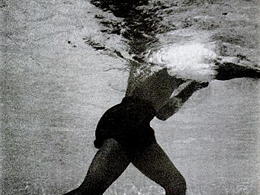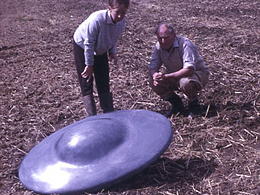September 9, 1991: Doug and Dave, Crop Circle Hoaxers
On this day, the British tabloid
Today announced that two men from Hampshire, Doug Bower and Dave Chorley, had originated the crop circle phenomenon back in 1978 as a prank. Over the years,
Today said, the two had continued creating hundreds of circles using nothing more than two wooden boards, a piece of string, and a baseball cap fitted with a loop of wire to help guide them. To prove their claim, the pair created a crop circle in the presence of a
Today journalist. [
menwhoconnedtheworld]
















